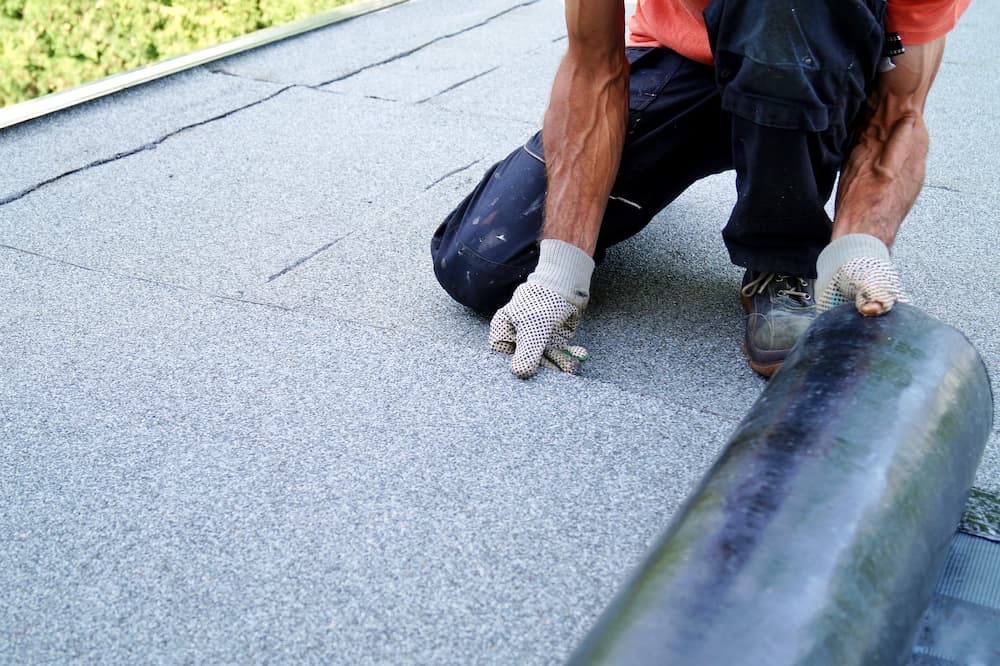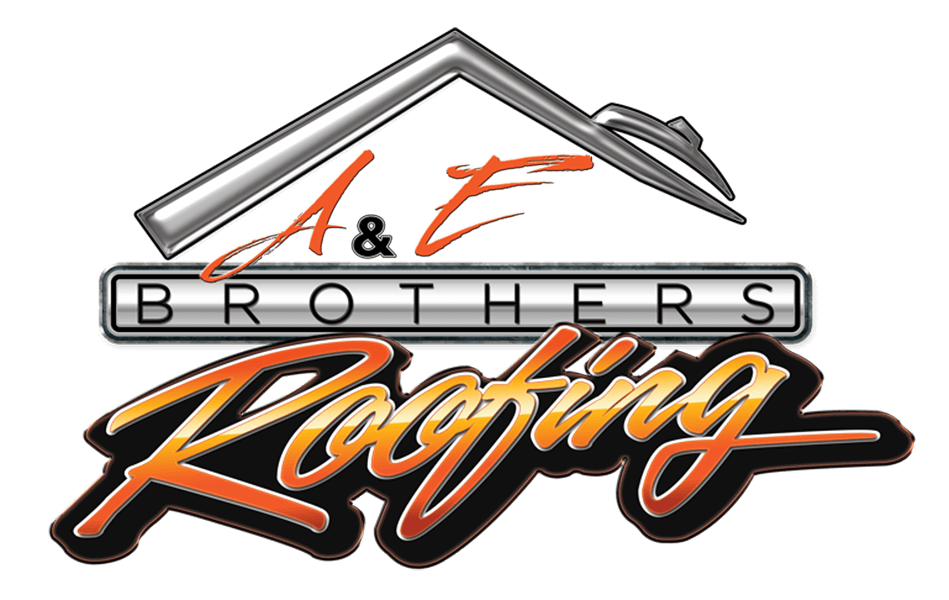
Flat roofs have been a mainstay in the roofing industry for over a decade. Over the decade, flat roofing saw significant improvements in performance and durability.
Flat roofs differ from their sloped counterparts in many ways. Material, appearance, benefits, and costs all put them apart. If you have never dealt with flat roofs before, it can be challenging to use them for the first time as a homeowner.
Types of Flat Roofs We Install
Built-up Roofs
Built-up roof membranes were the first flat roof materials of choice before the advent of modified bitumen and membrane flat roofing systems.
Built-up roofs consist of several layers of material. They have a bottom layer of insulation board, several layers of bitumen alternated with reinforced fiberglass, and a top layer of gravel.
Asphalt cold-applied adhesive or coal tar are the most used materials in built-up roofs. Hot tar mixes with the bitumen-saturated reinforcing fabric to form a monolithic roof membrane. As the name implies, we build roofs in layers until they are two or four plies thick.
Pros
- BUR offers excellent fire protection.
- It is the cheapest of all flat roof types.
- Low maintenance cost
- Layers are easily removed or repaired
Cons
- Installation is labor-intensive and expensive
- It is heavy and often requires deck reinforcement.
- It is difficult to locate the source of leaks
- Loose gravel easily clogs gutters and downpipes
- Dangerous fumes during installation make it unsuitable for occupied homes.
Modified Bitumen Roof
Modified Bitumen Roof (MBR) is a lighter alternative to BUR for buildings with gentle roof slopes. MBR uses the same technology as BUR with an added wear layer finish. Rolled sheets or polymer reinforced layers give the builder finishing options compared to other BUR systems.
Rolled sheets are usually rolled over a base sheet membrane. The torch application method involves heating the roofing sheet to melt the bottom material during unfolding.
Other types of MBR come with a self-adhering sheet. Manufacturers fit release papers on the bottom of the modified bitumen sheets. It eliminates the risk of using hot asphalt and torches.
Pros
- MBR is easier to install than BUR.
- MBR offers flexibility at low temperatures.
- MBR is low maintenance and durable.
- Most of the material is recyclable
Cons
- The touch-down application has a fire risk, and is not suitable for occupied buildings.
- MRB is the least attractive of all flat roof types.
- They are prone to scuffs and tears
- Prone to leakages at overlapping joints
Membrane (Single-Ply) Roof
Single-layer roofing is the latest roofing technology and material choice for flat roofs. It is also known as an elastomeric or an elastomeric roof membrane.
We classify single-layer roofs into two categories:
Thermoplastics
Thermosets
Thermoplastic membranes contain a reinforcement layer of polyester or fiberglass that adds to their strength and stability. It makes them ideal for large roof areas.
Thermosets contain synthetic rubber polymers. The most common single layer roof is ethylene propylene diene monomer (EPDM).
Single-layer roofs are installed in thin layers, making them flexible to withstand temperature changes.
Pros
- An EPDM roof is light and does not require deck reinforcement.
- The material is resistant to scuffs and tears.
- An EPDM roof is energy-saving.
- The roof does not leak easily.
- Leaks are easy to repair.
Cons
- Most expensive of all flat roofs
- Easily punctured by foot traffic during roof repair
- Challenging to install around chimneys and other roof openings
- May develop leaks at membrane sheet joints
Other Roofing Services Offered
Slate Roofing Installation Miami
Shingle Roof Installation Miami
Trust the Flat Roof Installation Experts at A&E Brothers Roofing
A&E Brothers Roofing team of experienced roofers knows their way around flat roofs of all types. With over 50 years of experience in the industry, you can count on our flat roof installation services.
Trust A&E Brothers Roofing to deliver timely and cost-efficient flat roofing projects.
Contact us today for a flat roofing installation estimate in South Florida and Miami.
Image Source: Mabeline72 / Shutterstock
Our Customers Love Us!
“I am extremely satisfied with my experience with A&E Brothers Roofing and highly recommend them. Everyone —— the team in the office, the crew that worked on our property, the owners of the company —— was extremely responsive, professional and caring. This is a company that takes pride in quality work and offers a very high level of customer service. Thank you A&E Brothers Roofing for a job well done!”
– Robin R.
Visit our Miami office
A&E Brothers Roofing
4143 SW 74th Ct Suite E,
Miami, FL 33155
Office Phone Number: (305) 815-7208
Office hours: M-F 7 A.M. – 4:30 P.M.



